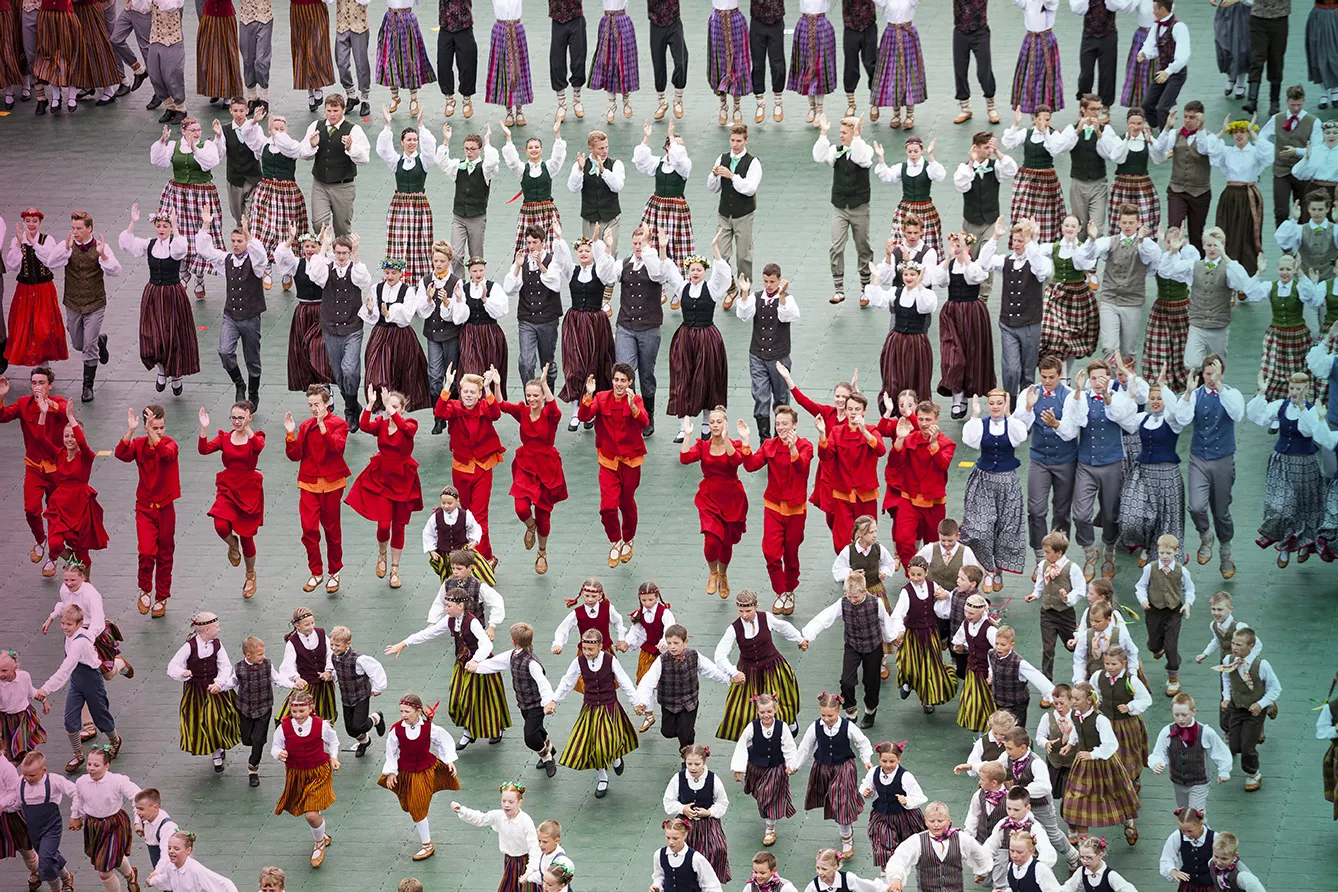Music and dance have always been essential parts of human culture. Their origins can be traced to prehistoric times, as the oldest instrument found in Divje Babe is believed to have been made by a Neanderthal from a bear bone. Its existence suggests that music was known and performed by humans as early as 46,000 – 44,000 BC.
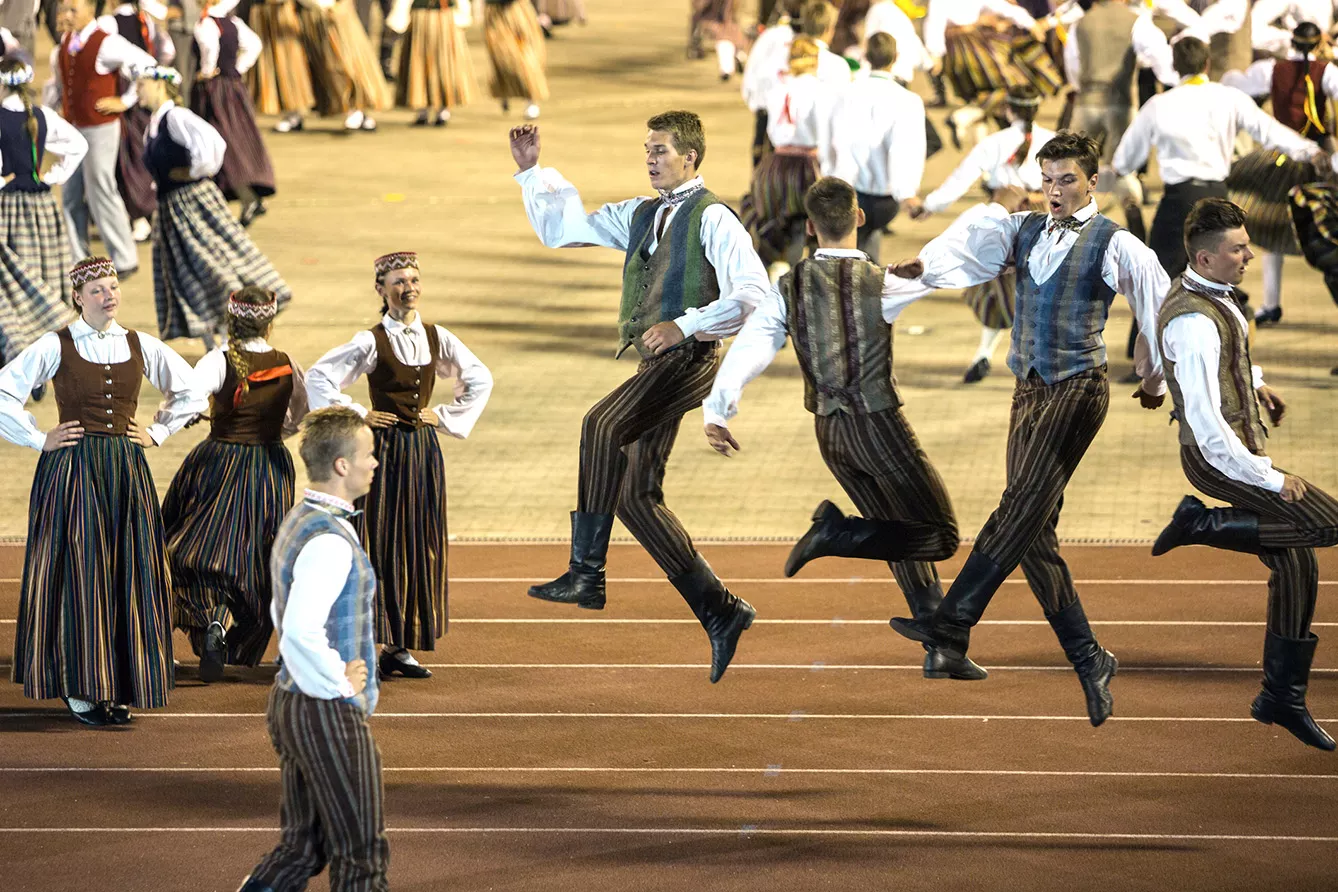
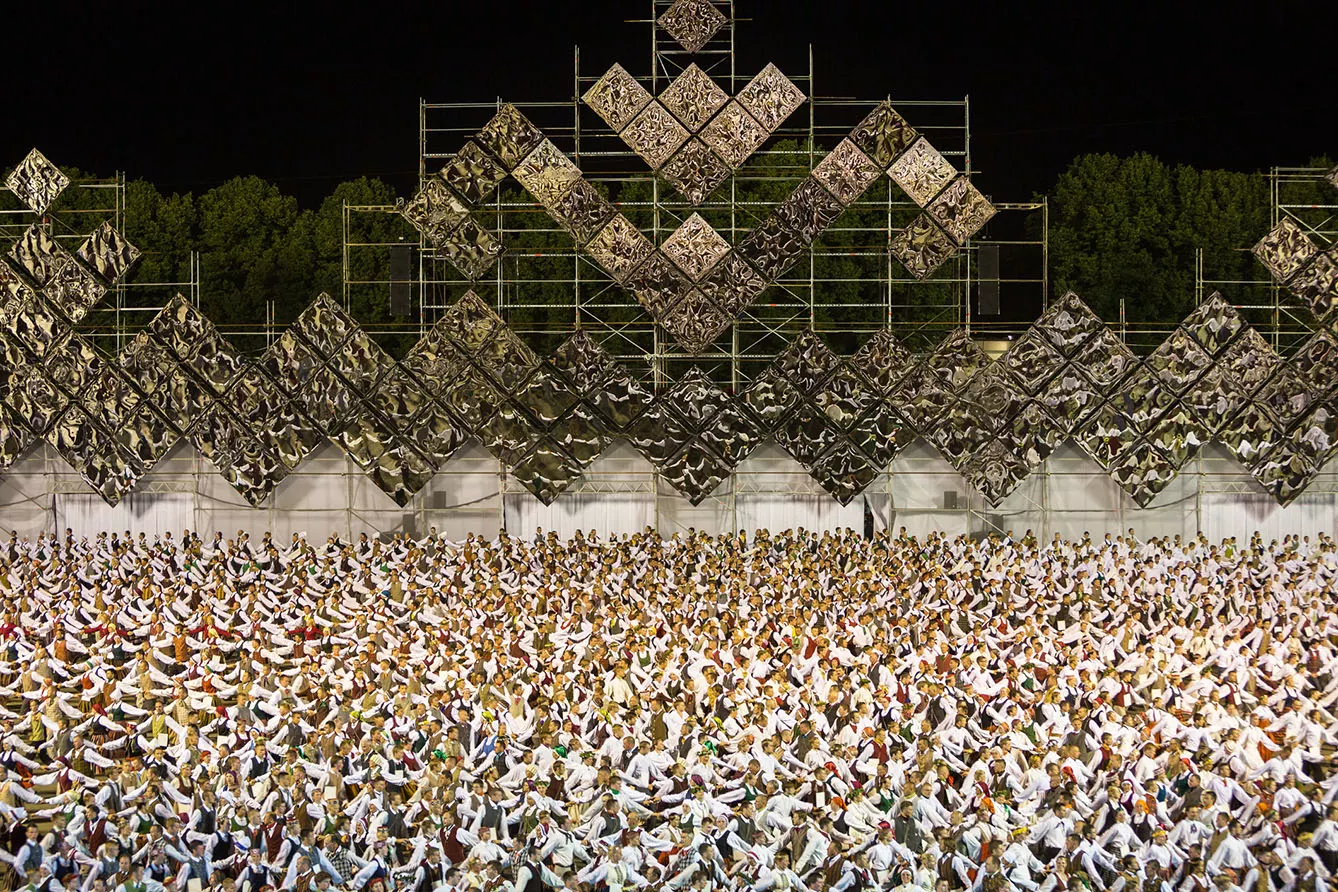
It became a vital part of the cultural code of any community. Songs and dance would carry their history through the ages, transforming with those they bound together. Today, the meaning conveyed in traditional folk songs and dances is perhaps even more critical to the nations which managed to regain their independence after long strife.
Such is the case with the Baltic Countries. Lithuania, Latvia, and Estonia are all home to the world’s largest folk song and dance festivals. Attended by thousands of performers, each country hosts a unique event that is additionally important for the historical message it carries.
Song and Dance Festival: A celebration of culture
All three festivals have certain similarities. Held every five years (except in Lithuania, where it is organized once every four years), they require enormous preparation. Participants enlist as early as two years prior to the next event and work hard to bring the artistic vision alive. The Estonians call it the reunion of a family. And indeed, that description conveys the character of the Baltic Countries Song and Dance Festivals. It is an opportunity to show pride in their countries, cultures, and shared heritage. The festivals are also surrounded by many traditions, such as the opening procession. They are usually accompanied by theatre shows, folk dress beauty pageants, and musical performances.
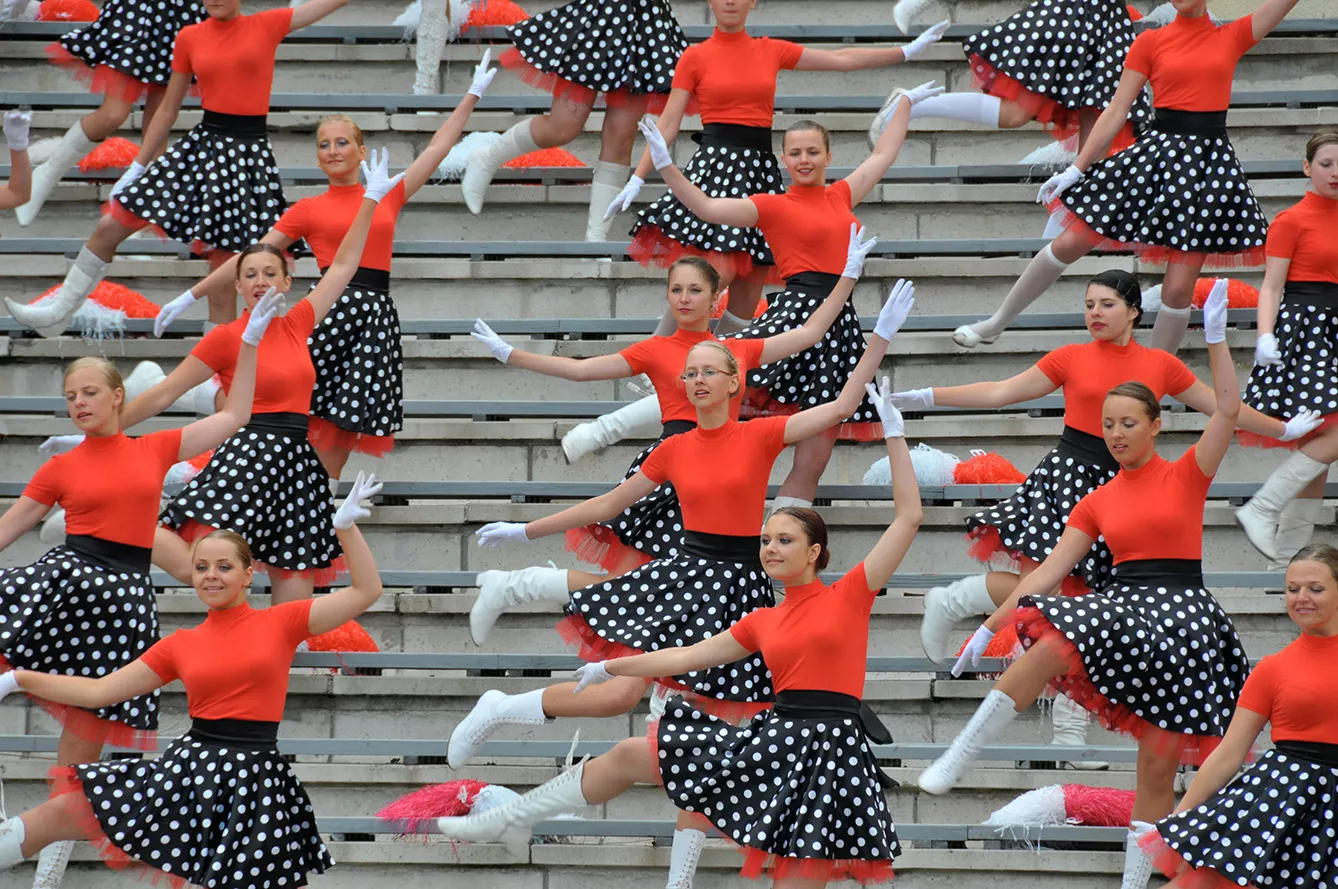
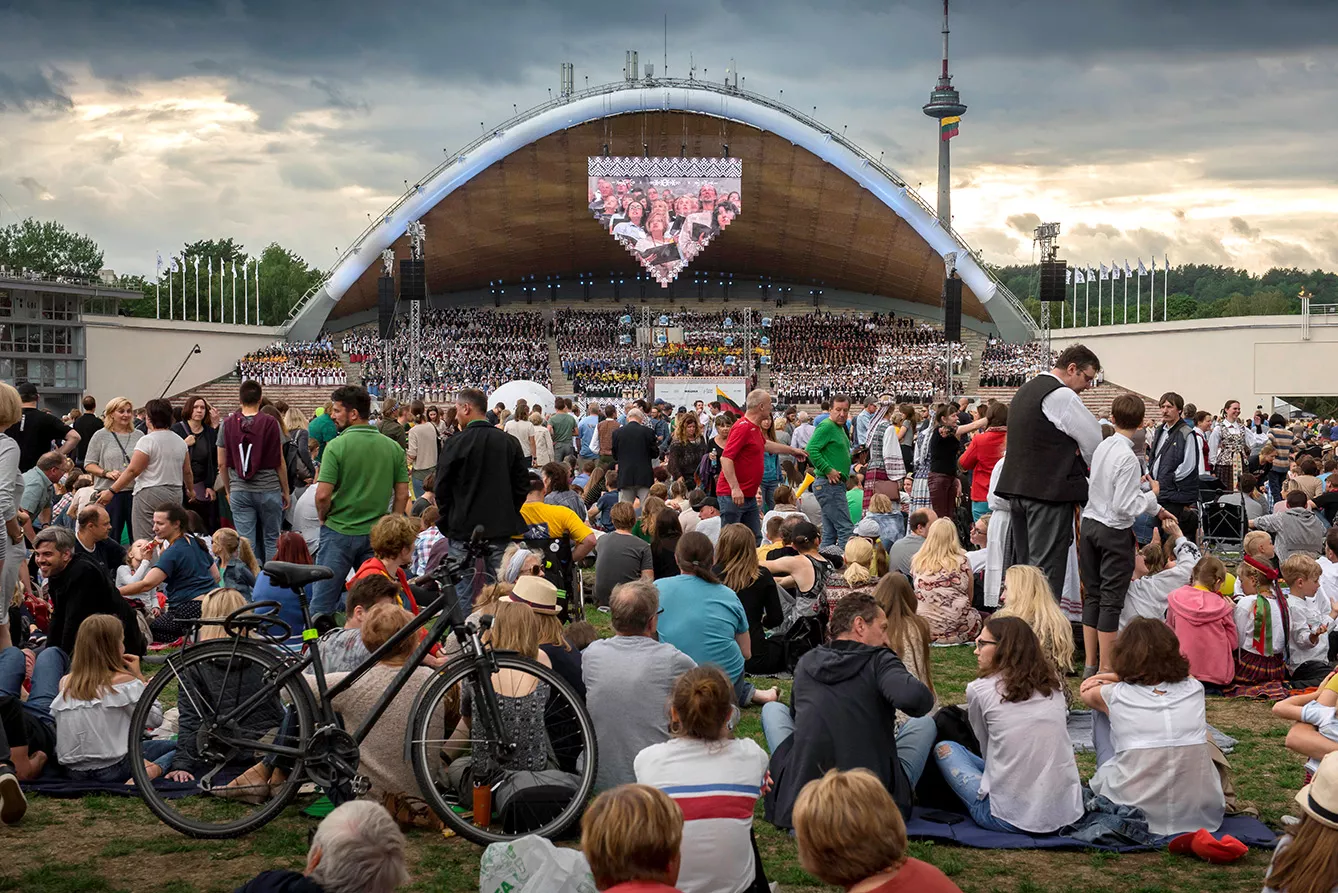
The magnitude of this tradition can be seen in the number of performers. It varies between 40 and 50 thousand! In Latvia, the opening Dance Show of 2018 saw 17,000 performers on the stage, while the closing Choir Grand Finale was voiced by 16,000 singers! All three nations say it is impossible to explain the feeling you get when you are a part of this unique experience. They all wholeheartedly invite visitors to join them and see their culture at its best. But are there any differences?
Three pieces of one
Of course, the Baltic Countries’ cultures are not the same – each has its own folk costumes, symbolism, melodies, and dances. All three have been held for a similar amount of time; however, there are differences.
Estonians can be proud that the first Song and Dance Festival was organized in Tartu by Johann Voldemar Jannsen in 1896, making it the oldest of the three. The Latvian Song and Dance Festivals originated from earlier, similar events dating back to 1864. However, theirs was officially held for the first time in 1873 in Riga, which would become its permanent home (with one exception – the Festival of 1895). The Lithuanian Festival is the youngest of the trio; however, it still has a longstanding history reaching back to 1927.
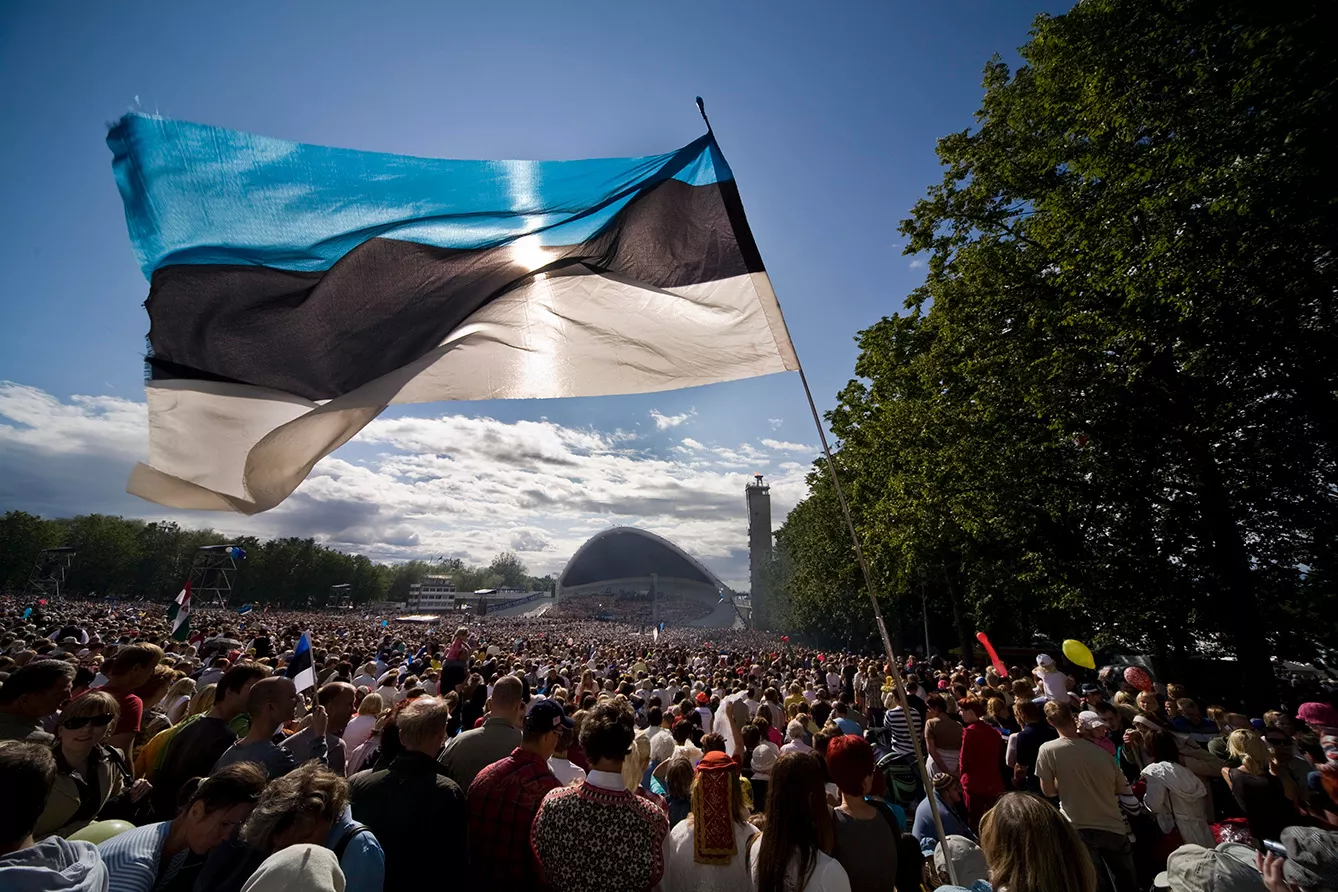
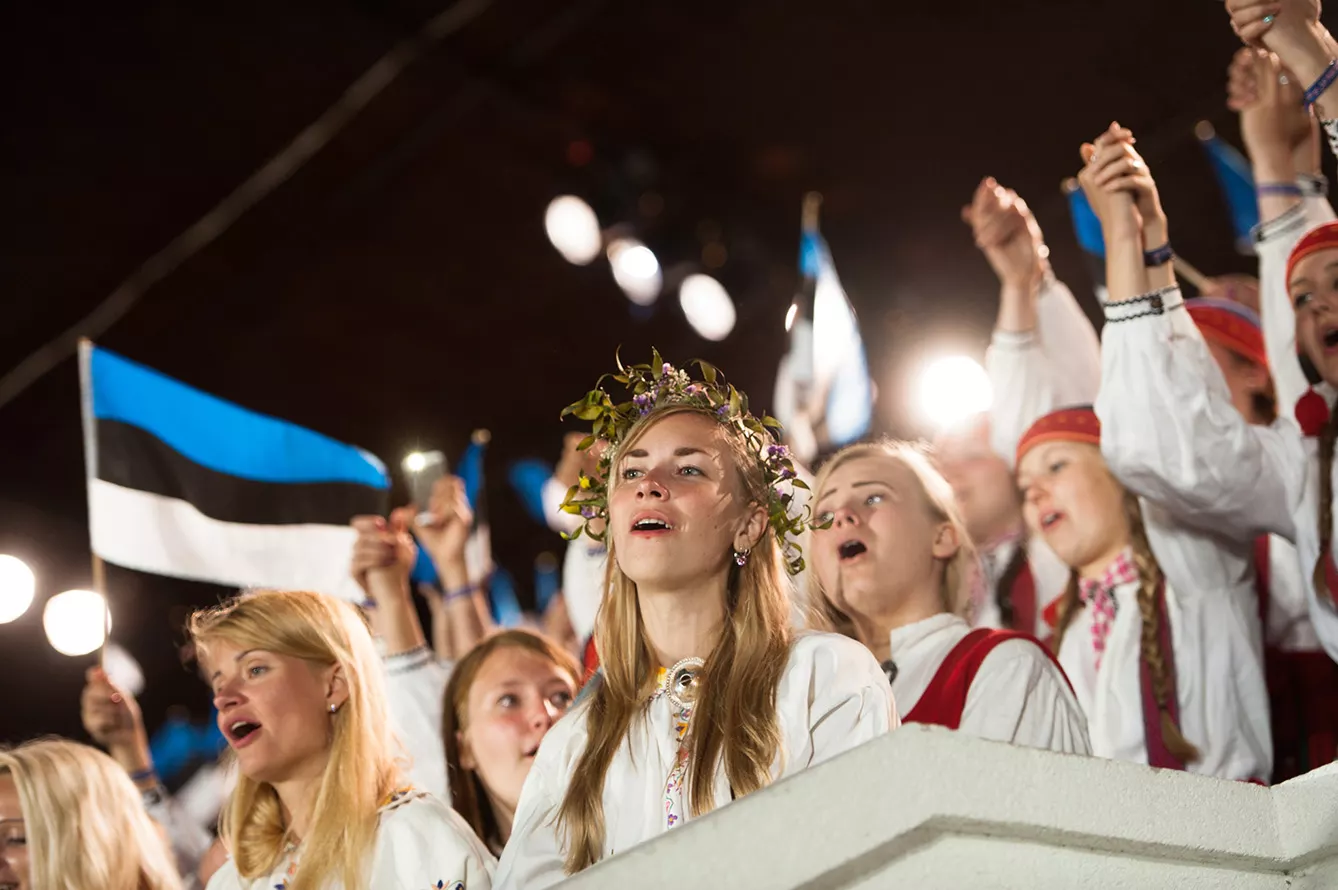
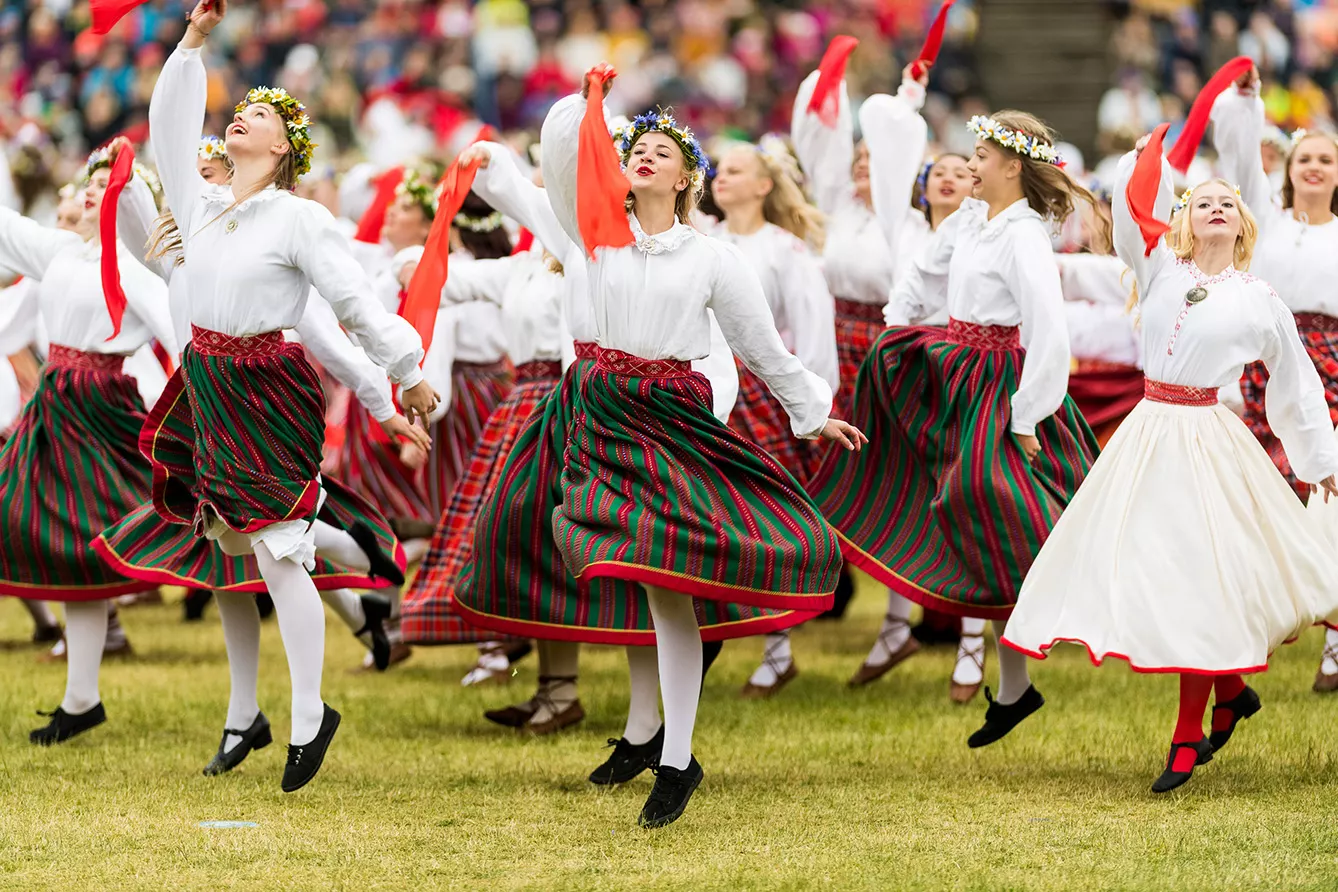
Interestingly, the Estonian Festival begins with a torch being lit in Tartu, which then travels through the land to Tallinn – the contemporary home of the Festival. Much like during the Olympics, it is a sign the country will come together again to celebrate its culture. On the other hand, Lithuanians had in 1990 turned the days of the Festival into a public holiday.
Intangible Cultural Heritage
If you still feel you need more evidence for the unparallel character of these events, let me leave you with the last piece of vital information. In 2003, UNESCO entered the Lithuanian, Latvian, and Estonian Song and Dance Festivals on its List of Masterpieces of the Oral and Intangible Heritage of Humanity. And rightly so. They deserve recognition as a beautiful and magnificent celebration of their respective cultures —a shining example of how to rejoice in one’s cultural heritage.


